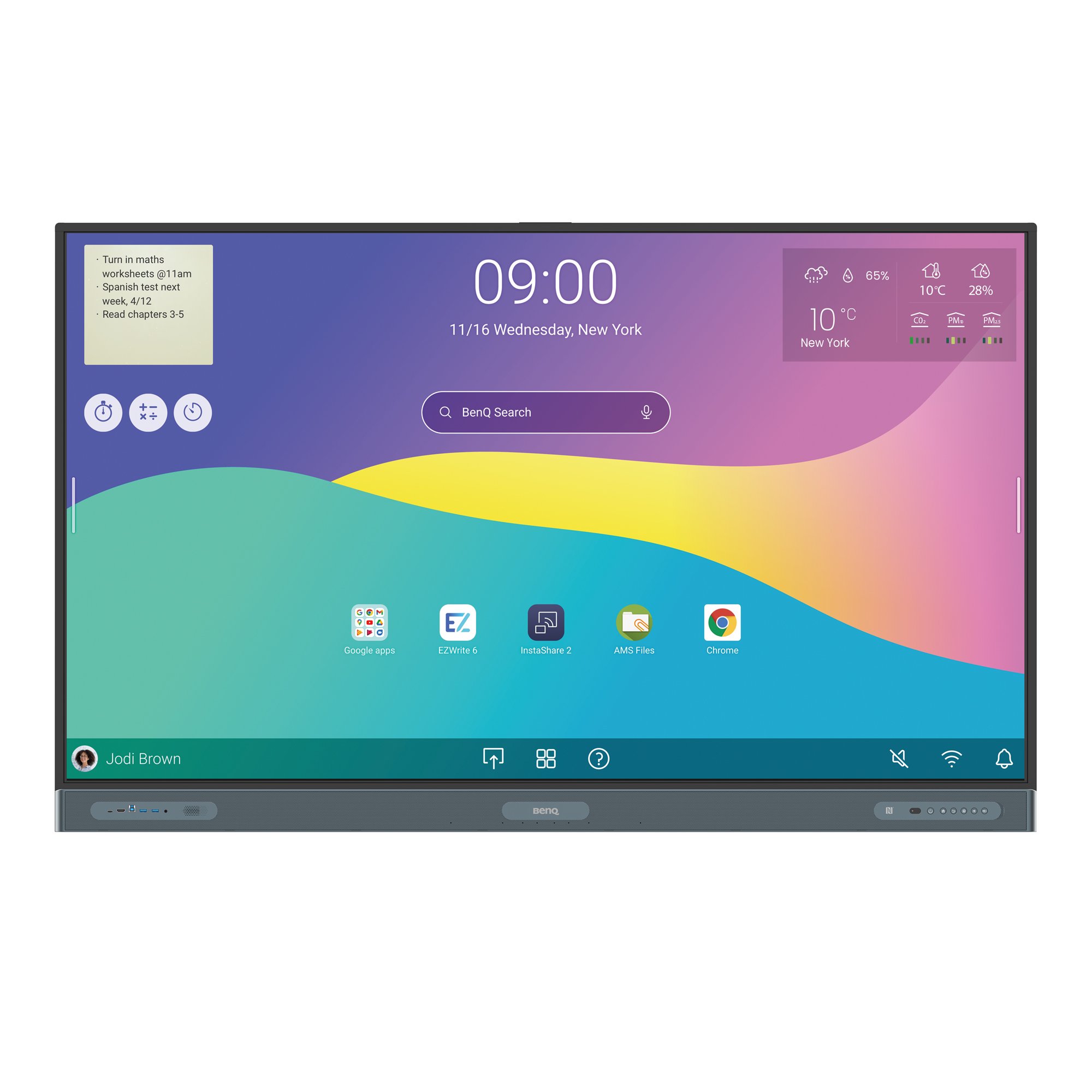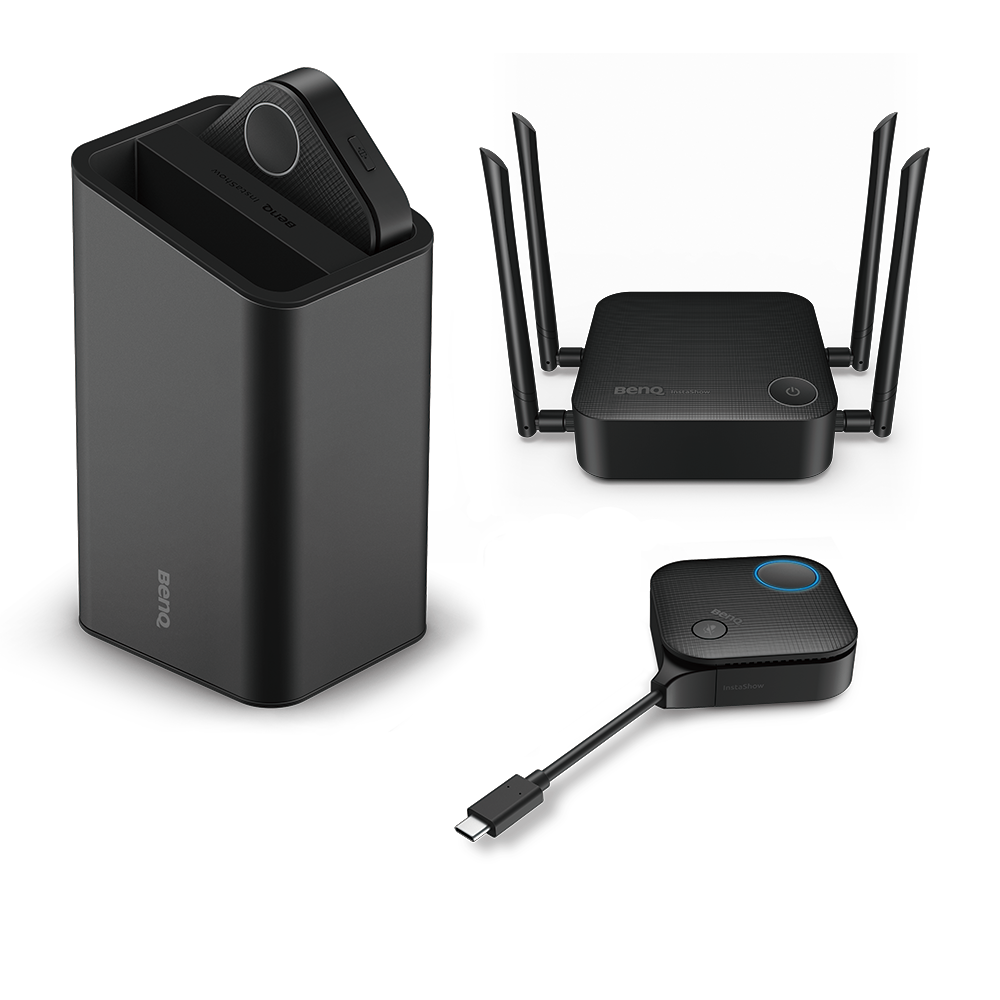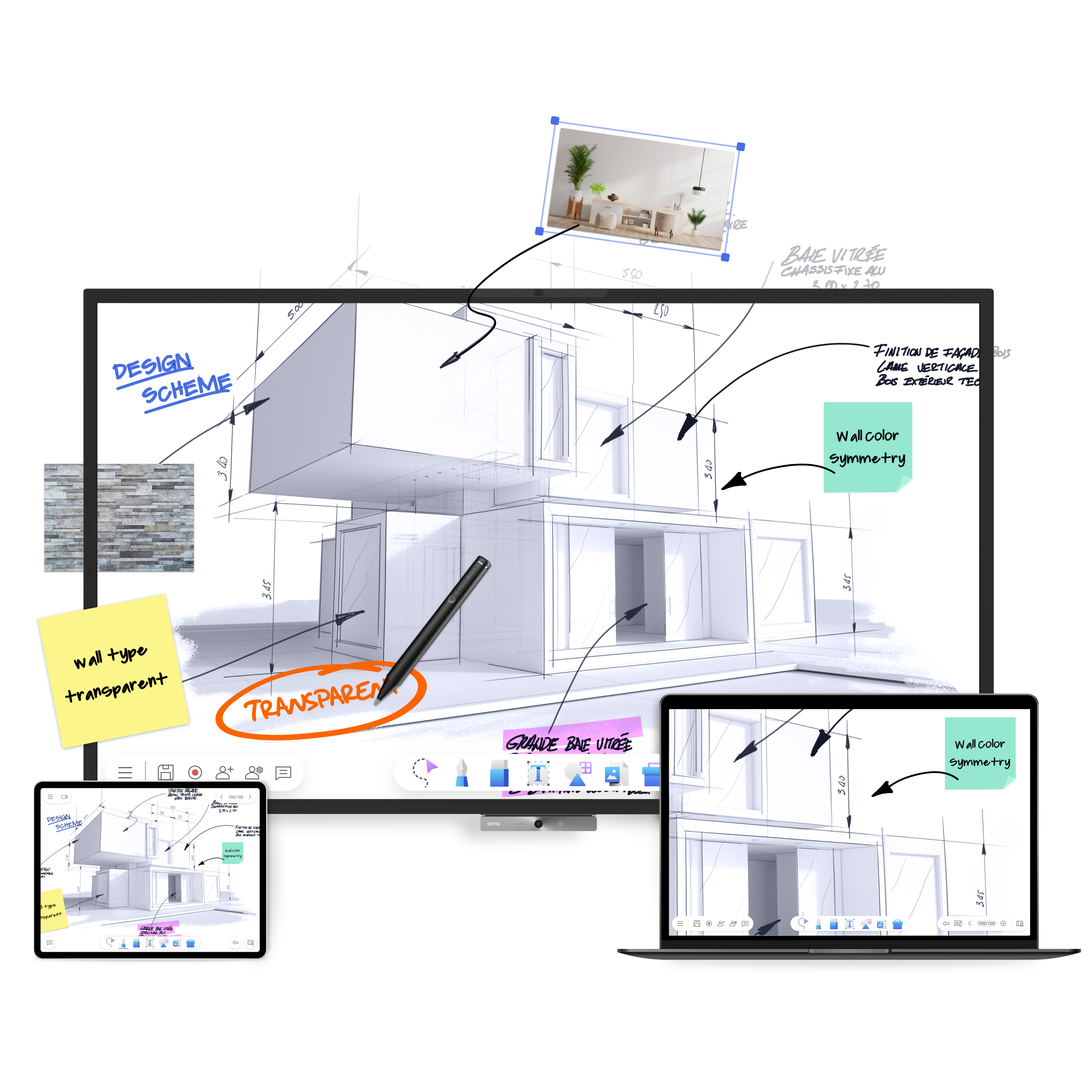Creating a Smart Workplace: A Guide to Innovation and Future Trends
- BenQ
- 2024-06-13
Smart workplace technology is not just reshaping the modern office environment; it's revolutionizing workplace efficiency. In this article, we focus on how smart workplace technology is streamlining operations and simplifying tasks, enabling employees and businesses to achieve more with less effort.
We'll also explore the various aspects of smart technology that contribute to a more efficient workplace, including the essential deployment of smart workplace software and hardware technologies to foster a collaborative and streamlined workplace. With practical tips for implementation and insights into maximizing the benefits of smart technology, this guide will equip you with the knowledge to propel your business forward in the digital age with the right tools.
What is the Smart Workplace?
A smart workplace revolutionizes the traditional office by embedding technology deeply into business operations, with a strong emphasis on enhancing communication and interactivity among team members. This transformation is pivotal in modernizing work environments to not only support a variety of work modes but also to facilitate a higher level of engagement and collaboration. By integrating digital tools such as interactive whiteboards, smart projectors, laser projectors, and collaborative platforms, employees can share ideas and feedback in real time, regardless of physical location. This approach not only makes the workplace more adaptable and efficient but also nurtures a culture where innovation thrives through continuous interaction and dialogue.
Advantages of a Smart Workplace
Adopting a smart workplace is not just about staying current with trends; it's about leveraging the transformative power of technology to create a competitive and innovative business environment. Here's why catching up with the smart workplace trend is essential for businesses:
● Enhanced Communication:
Smart projectors and collaborative platforms break down geographical barriers, ensuring that communication remains fluid and comprehensive across global teams. This level of connectivity is crucial for businesses aiming to maintain a cohesive strategy and vision across multiple locations, enhancing decision-making and alignment with corporate goals.
● Dynamic Interactivity:
By enabling direct engagement with digital content, interactive whiteboards, and collaboration tools facilitate a more immersive learning and brainstorming experience. This dynamic interactivity not only speeds up the ideation process but also ensures that all voices are heard, fostering a culture of inclusivity and innovation. For businesses, this means faster iteration cycles and more creative solutions to challenges.
● Boosted Employee Productivity:
Access to instant messaging, video conferencing, and shared digital workspaces eliminates many of the time-consuming aspects of traditional work processes. Employees can share files, get immediate feedback, and conduct meetings without physical constraints, significantly reducing downtime and increasing overall productivity. For businesses, this translates to better utilization of human resources and faster project turnaround times.
● Improved Collaboration:
The ease with which team members can collaborate across different platforms and time zones directly impacts the efficiency of project execution. When collaboration tools are seamlessly integrated, it removes bottlenecks in communication, ensuring that projects progress smoothly without delays. This level of operational efficiency is crucial for businesses looking to improve their service delivery and customer satisfaction.
● Flexibility and Connectivity:
Supporting a flexible work model not only caters to the evolving expectations of the modern workforce but also ensures business continuity under any circumstances, such as during global disruptions. This flexibility allows businesses to attract and retain top talent by accommodating different working styles and life commitments, ultimately contributing to a more motivated and productive workforce.
● Innovative Work Environment:
A workplace that prioritizes communication and interactivity naturally cultivates an environment where innovation can flourish. Employees are more likely to experiment, challenge existing assumptions, and explore new ideas when they feel supported by collaborative and interactive technologies. This drive for innovation is what keeps businesses at the forefront of their industries, enabling them to develop new products, services, and processes that meet the evolving needs of their customers.
Technologies Powering the Smart Workplace
The smart workplace is at the forefront of the modern business landscape, propelled by a suite of advanced technologies designed to streamline operations and foster a culture of innovation and collaboration. This evolution is marked by the integration of both software and hardware solutions, each playing a pivotal role in transforming traditional work environments into dynamic, efficient, and interactive spaces.
Software Solutions for the Smart Workplace
Software tools are the backbone of the smart workplace, offering functionalities that range from equipment management to seamless collaboration. These platforms facilitate a more organized and efficient work environment by automating routine tasks, thereby allowing employees to focus on more strategic activities. Key software solutions include project management platforms that offer real-time tracking of progress and deadlines, communication tools that ensure instant and effective team interaction, and cloud-based systems that provide secure, on-demand access to data and resources. These technologies optimize workflow and support a remote and flexible work model, accommodating the diverse needs of the modern workforce.
Equipment Management Software
This type of software in the smart workplace is designed to help businesses manage their equipment inventory, schedule maintenance, and track the lifecycle of each piece of equipment efficiently. By automating these processes, businesses can prevent equipment downtime, extend asset life, and reduce costs associated with manual tracking and unexpected repairs. Features typically include asset tagging, maintenance scheduling, warranty tracking, and reporting capabilities, which collectively enhance the operational efficiency of the workplace.
Collaborative Software
Collaborative software is at the heart of the smart workplace, enabling seamless interaction among team members, regardless of their physical location. This software encompasses a wide range of tools that support real-time communication, file sharing, and project collaboration. Key functionalities include video conferencing, shared workspaces, instant messaging, and real-time document collaboration. These features ensure that all team members are on the same page, facilitating a faster decision-making process and enhancing productivity. Collaborative software not only supports a more inclusive and engaging work environment but also aligns with the flexibility needed to accommodate various working styles and schedules, crucial for modern, dynamic business environments.
Hardware Innovations in the Smart Workplace
In parallel with software advancements, hardware innovations play a critical role in the smart workplace ecosystem. Interactive whiteboards, smart projectors, laser projectors, and smart conference devices stand out as technologies that enhance the physical workspace, making it more conducive to collaboration and creativity. Interactive whiteboards offer a versatile platform for presentations, video conferencing, and interactive discussions, merging the digital with the tangible to enhance learning and engagement. Smart projectors, on the other hand, transform any surface into an interactive display, facilitating dynamic presentations and collaborative sessions without the constraints of traditional screens. Let's delve deeper into how laser projectors, interactive whiteboards, and smart video conferencing solutions shape a smart workplace.
What is a Smart Laser projector?
A smart laser projector is an advanced technology for modern workplaces, enhancing meetings and collaborations by turning any surface into an interactive display. These projectors offer superior color accuracy, vital for clear presentations, and integrate seamlessly with Android OS for direct access to apps and digital resources. Featuring SmartEco technology, they optimize power usage to extend lamp life and reduce energy costs, making them ideal for businesses prioritizing sustainability and efficiency.
What is an Interactive Whiteboard?
Interactive whiteboards elevate the collaborative experience by combining the simplicity of traditional whiteboards with the power of digital technology. These devices enable users to write, draw, and interact directly with the content displayed, facilitating a hands-on approach to brainstorming and problem-solving. The real-time sharing of ideas and feedback fosters a participative atmosphere, crucial for driving creativity and innovation within teams.
What are Video Conferencing Solutions?
Smart video conferencing solutions streamline technical setup and enhance security in office environments, making meetings more agile and user-friendly. These devices simplify the traditional complex arrangements needed for connectivity and reduce technical hassles.
Devices like smart projectors or Interactive whiteboards replace the need for separate computers and screens, reducing wiring complexity and connection issues. This simplifies setup and makes technology accessible for efficient meeting initiation.
Enhanced security features manage user access through systems like Account Management Systems (AMS), allowing logins via identification badges. This reduces the risk of personal data exposure in public or shared settings, safeguarding privacy.
Equipped with voice recognition, automatic focusing, and active noise cancellation, these devices automate many aspects of the meeting experience, ensuring effectiveness and minimal disruption.
All traditional meeting room equipment, including displays, cameras, and connection systems, can be upgraded to smart devices. Transitioning to smart projectors, AI cameras, and wireless presentation systems enhances functionality and supports seamless integration.
These advancements in smart conference solutions facilitate a more integrated, secure, and user-friendly meeting environment, aligning with the needs of workplaces.
The AI-Powered Smart Workplace: Looking Ahead
As smart workplaces evolve, AI advancements are becoming integral in streamlining communication and collaboration, exemplified by the latest updates to Zoom Workplace. This platform revision is perfectly aligned with the smart workplace ethos, leveraging AI to merge various communication tools into a unified system that enhances operational efficiency and simplifies user interactions.
The integration of AI not only refines workflows by automating routine tasks like meeting summaries and task scheduling but also enhances real-time collaboration through features like document co-editing and dynamic team chats. Such capabilities ensure that all meeting-related activities are more coordinated, which is crucial for maintaining the agility and responsiveness of a smart workplace.
Furthermore, the introduction of smart conference room technologies and AI-powered assistants like the "Ask AI Companion" further embody the smart workplace ideal. These innovations reduce the friction typically associated with managing physical and digital workspaces, from streamlined room reservations to intelligent information synthesis, helping teams navigate their day more efficiently and effectively.
Discover Smart Workplace Solutions with BenQ
Today's organizations require a "total solution" that encapsulates not only the technological tools but also seamless integration capabilities and robust support services. BenQ addresses this need with a holistic approach to smart workplace solutions that blend state-of-the-art products, superior integration, and exceptional service.
BenQ's Smart Workplace solutions are built to enhance collaboration and efficiency across business operations:
From smart projectors to interactive whiteboards, BenQ's products are designed for seamless compatibility with various software and applications, ensuring flexibility and interoperability in existing business ecosystems.
BenQ's EZWrite, developed in-house, facilitates interactive collaboration with features like digital whiteboarding, enhancing brainstorming sessions, and strategic meetings.
BenQ ensures that each client receives tailored solutions with comprehensive support from installation to maintenance, maximizing the utility and efficiency of their technology investments.
By partnering with BenQ for smart workplace solutions, businesses gain more than just technology—they gain a partner committed to delivering a comprehensive ecosystem that enhances productivity and innovation. This commitment positions BenQ as a leader in facilitating modern, intelligent work environments.



